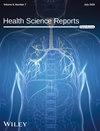Growth-Associated Protein 43 Levels in the Cerebrospinal Fluid Correspond to the Cerebral Blood Flow Alterations in Alzheimer's Dementia Continuum: An Original Study
Abstract
Background and Aims
Alzheimer's disease (AD) is a widespread neurodegenerative condition that has a growing impact on a global scale. This study aims to examine the relationship between cerebral blood flow (CBF) and the synaptic biomarker growth-associated protein 43 (GAP-43) through the utilization of arterial spin labeling (ASL). The research identified noteworthy correlations between cerebrospinal fluid (CSF) GAP-43 levels, CBF, and cognitive composite scores, especially among participants with mild cognitive impairment (MCI) who possess the APOE-ε4 gene.
Methods
The study examined 92 participants from the Alzheimer's Disease Neuroimaging Initiative (ADNI) database, including 36 cognitively normal (CN) and 56 MCI. The cognitive status of 42 participants was evaluated using ADNI composite scores. Independent t-tests and Mann-Whitney tests were used for the comparison of continuous variables between groups, and multiple linear regression analysis with adjustments for confounding factors was used to assess the relationship between GAP-43 and CBF values.
Results
Significant positive correlations were observed between GAP-43 levels and (A) the executive function composite score (ADNI_EF) in CN individuals, as well as (B) the language composite score (ADNI_LAN) in individuals with MCI. CSF biomarkers and ASL regions did not show statistical significance between diagnostic groups after correction for multiple comparisons. No significant differences in baseline characteristics were found between diagnostic groups. However, associations were observed between ROI CBF and Mini Mental State Examination in various subgroups.
Conclusion
The findings indicate a potential function for ASL perfusion in identifying early AD-related alterations and gaining insight into the pathophysiology of AD and mild cognitive impairment.
The study revealed associations between CBF, cognitive scores, and APOE-ε4 gene status. This study contributes to the comprehension of the correlation between CSF biomarkers, regional brain perfusion, and cognitive function in individuals with AD using ASL as a noninvasive approach.


 求助内容:
求助内容: 应助结果提醒方式:
应助结果提醒方式:


